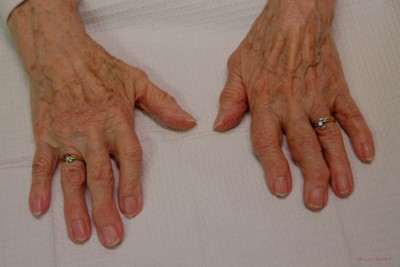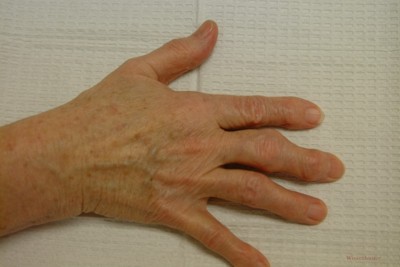U.C.L.A. Rheumatology Pathophysiology of Disease Course Lecture, Second Year Medical School 2005
Animation: OA Clinical : The clinical changes with OA.
Animation: OA Clinical : The clinical changes with OA.
Animation: OA Clinical : The clinical changes with OA.
The clinical changes with OA.


OA is a slowly evolving disease of the articular joints, which is characterized by the slow development of joint pain, often followed by joint stiffness and a decrease in range of motion of the joints. OA is classified as being primary if it occurs in the absence of any known predisposing factors. OA is a very common disease and is often benign, but severe degeneration can cause serious disability. OA of the knee alone causes as much disability as heart disease and chronic obstructive lung disease. There are over 21 million Americans with clinically significant OA.
Joint pain first appears in joints after use, and is often achy and poorly localized. With advancing disease the pain becomes constant, and may awaken the patient at night. Stiffness of the joint is a common complaint, and occurs in the morning and after inactivity during the day. Unlike Rheumatoid Arthritis, the stiffness is usually of short duration, i.e., 15 minutes or less.
Objectively, when an OA joint is examined, there may be tenderness. On passive movement, there is often a sensation of crackling or grating, which is more felt than heard, and which is referred to as crepitus. This finding is quite specific to OA. The joint may be enlarged by the presence of secondary synovitis (usually much less prominent than that seen with Rheumatoid Arthritis), excessive synovial fluid accumulation (effusion), or by the marginal development of osteophytes.